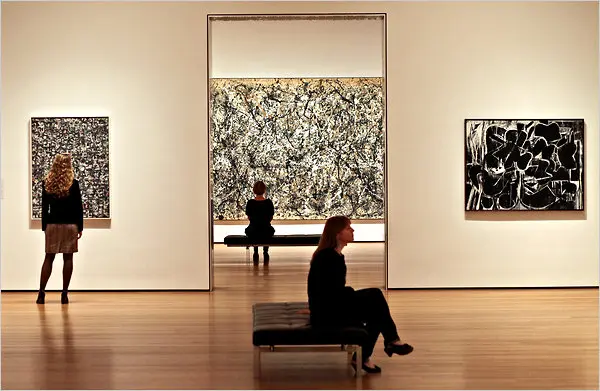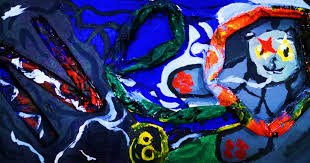Throughout art history, Expressionism has represented a visceral outcry against human and social anguish. Emerging in the early 20th century as a reaction to mechanization and the collapse of Western values, the movement brought emotion to the forefront. Vivid colors, distorted forms, and intense figures expressed—rather than described—the inner world of artists.
In the 21st century, marked by identity, climate, and digital crises, the expressionist spirit returns—not as repetition, but as reinvention. Contemporary artists reclaim emotional intensity as a language to confront the traumas of an age defined by anxiety, isolation, and image saturation.
The Legacy of Expressionism and Its New Developments
Classical Expressionism was defined by groups such as Die Brücke and Der Blaue Reiter, which sought to portray the human soul in raw, instinctive ways. Works by Egon Schiele, Ernst Ludwig Kirchner, and Wassily Kandinsky broke away from academic rationality, paving the way for radical subjectivity.

According to Norbert Wolf in Expressionism, the movement was not merely aesthetic, but “an attempt to reconnect art with the inner forces of human existence in a time of social disintegration” (Wolf, 2004). This existential urgency echoes strongly in today’s art, though in new forms.
Today, expressionism resurfaces in gestural painting, cathartic video art, and immersive installations that stimulate the senses. Artists like Cecily Brown, Jenny Saville, and Oscar Murillo use various languages to channel emotional intensity, breaking with minimalist coolness and conceptual detachment.
In Brazil, artist Erika Verzutti blends organic forms and tactile surrealism in works that defy industrial logic. Her practice invites a return to the body, matter, and affection—central themes in the contemporary expressionist revival.
Emotion as Critique in 21st-Century Art
While original Expressionism engaged with the chaos of pre-war Europe, its modern iteration responds to digital overexposure. In times of filters, avatars, and AI, there is growing demand for authenticity and raw feeling. Art becomes a refuge for what doesn’t fit into algorithms.
Critic Hal Foster, in The Return of the Real, argues that “trauma, memory, and emotion reappear in contemporary art not as nostalgia, but as symptom” (Foster, 1996). This is reflected in recent exhibitions at the Centre Pompidou and Tate Modern, which showcase powerful works centered on the body, scream, and emotional distortion.
Revisiting expressionism is not merely an aesthetic gesture: it is a sensitive resistance to an anesthetized world. Instead of offering answers, it invites us to feel. Intensity, therefore, becomes political—challenging the logic of constant productivity and toxic positivity.
Intensity as the Language of the Present
By revisiting expressionism, 21st-century art proposes a new sensibility. One that embraces failure, chaos, and pain as legitimate parts of human experience. Thus, today’s expressionism is not escapism—it is a deep form of engagement with the real.
This revival can also be seen in street art, where murals and graffiti cry out in raw colors against urban neglect. Or in digital art, where chaotic animations express post-pandemic anxiety. The visual language expands, but the essence remains: to move is to resist.



